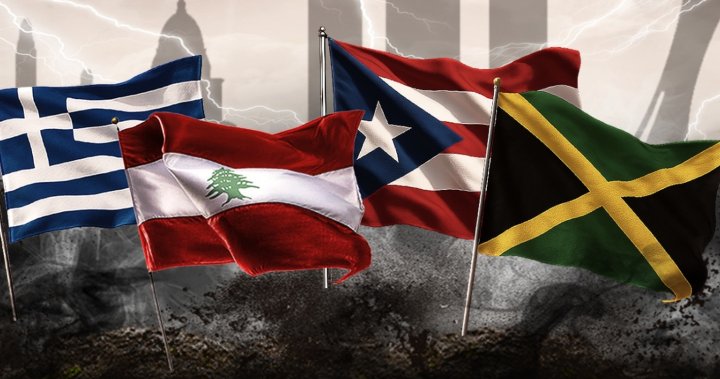As the weak March sun glinted off the ice at Surrey’s North Surrey Sport & Ice Complex, a scene both familiar and distinctly unusual played out before me. The rhythmic scrape of skates, the hollow thwack of sticks on pucks—these sounds form Canada’s winter soundtrack. But the voices calling out plays in Arabic, Mandarin, and Hindi signaled something new emerging in our national game.
I was witnessing the International Challenger Hockey Series, where teams from twelve countries not traditionally associated with ice hockey—including India, Lebanon, Jamaica, and the Philippines—competed in a weekend tournament that challenged long-held assumptions about who belongs in Canada’s hockey culture.
“When I first arrived in Canada ten years ago, I never imagined I would play hockey,” Ali Mahmoud told me between shifts on the Lebanon team bench. Sweat beaded on his forehead as he adjusted his helmet. “In Beirut, I had never even seen ice. Now my children and I play together every weekend. It feels like we truly belong here.”
The tournament, organized by Hockey Without Borders Canada, aims to broaden hockey’s cultural reach while creating a pipeline for new talent in a sport searching for growth beyond its traditional strongholds. Recent Statistics Canada data shows that newcomer communities represent Canada’s fastest-growing population segments, yet hockey participation among these groups remains disproportionately low.
Rajan Singh, captain of Team India, believes the issue is multilayered. “It’s not just about access to ice time, which is expensive,” he explained, tapping his stick thoughtfully against his skates. “Many immigrant families don’t have generational knowledge of the game. They never learned from their parents, so teaching their own children feels impossible.”
This cultural disconnect exists alongside financial barriers. A 2022 study from the Institute for Canadian Citizenship found that equipment costs and league fees can exceed $3,000 annually per child, putting organized hockey out of reach for many newcomer families who prioritize economic establishment.
Yet at this tournament, the enthusiasm transcended these obstacles. The Filipino team arrived with a boisterous cheering section, complete with traditional barong tagalog shirts modified with maple leaves and hockey sticks. Jamaica’s team brought reggae rhythms that pulsed through the arena during warm-ups, while China’s squad demonstrated remarkable technical precision that drew admiring glances from Canadian coaches scouting the event.
“What we’re witnessing is the globalization of Canada’s game,” said Dr. Amina Jefferson, a sports sociologist at the University of British Columbia who studies cultural integration through athletics. “Hockey is evolving from an exclusively Canadian identity marker to a vehicle for cultural exchange and inclusion.”
The tournament’s impact extends beyond symbolic representation. During my day at the complex, I observed Hockey Canada scouts making notes on players displaying exceptional talent. Marc Bergevin, former NHL general manager now working with Hockey Canada’s development programs, explained the strategic importance of these events.
“The future of Canadian hockey depends on embracing all Canadians,” Bergevin said, watching a particularly skilled forward from Team Jamaica execute a perfect toe-drag around a defender. “Countries like Jamaica have incredible athletic traditions. Imagine what happens when we combine that raw athletic ability with hockey skills development.”
The results of this approach are already materializing. Participation rates in hockey among newcomer communities have increased 27% since 2018, according to Hockey Canada. Meanwhile, professional leagues are seeing greater diversity, with players like Jujhar Khaira (India), Zachary Aston-Reese (Jamaica/Philippines heritage), and Jason Robertson (Filipino heritage) inspiring new generations.
For 14-year-old Saanvi Patel, who watched the tournament with her family, seeing Team India compete was transformative. “I always thought hockey wasn’t for people who look like me,” she said, her eyes following the play intently. “But now I’m asking my parents if I can join a team.”
The tournament wasn’t without challenges. Some games revealed significant skill disparities, and occasional language barriers complicated referee communications. I witnessed moments of frustration when players unfamiliar with certain rules faced penalties they didn’t fully understand.
Yet these moments were overshadowed by the camaraderie that developed throughout the weekend. After Team Lebanon faced a difficult loss against a more experienced Jamaica squad, the Jamaican players invited their opponents to a shared meal where they exchanged jerseys and contact information.
“This is what makes hockey special,” Tournament Director Caroline Ouellette, a four-time Olympic gold medalist with Team Canada, told me as we watched this exchange. “The game creates community across differences. These players will stay connected long after they return home.”
As Sunday’s finals approached, the stands filled with families representing a mosaic of Canadian experiences. Children wore jerseys displaying unfamiliar country names alongside traditional Maple Leaf apparel. The concession stand had expanded its offerings to include samosas and jerk chicken alongside the standard hot dogs and poutine.
Team Philippines ultimately claimed the championship trophy after a thrilling overtime victory against Jamaica, but the real achievement seemed to be happening in the stands, where cultural barriers dissolved in shared celebrations.
When I asked Ouellette about the tournament’s future, she gestured toward the diverse crowd. “This is already a success beyond what we imagined. Next year we expect twenty countries to participate, and we’re discussing expanding to women’s teams as well.”
As I left the arena that evening, I passed a group of young boys—some in turbans, others in hijabs, several in hockey jerseys—playing an impromptu game of street hockey in the parking lot. They called plays in a blend of English, Punjabi and Arabic.
In that moment, it was clear that Canada’s game is changing, not diminishing. It’s expanding to reflect the faces of all who now call this country home, writing a new chapter in our national story one slap shot at a time.






